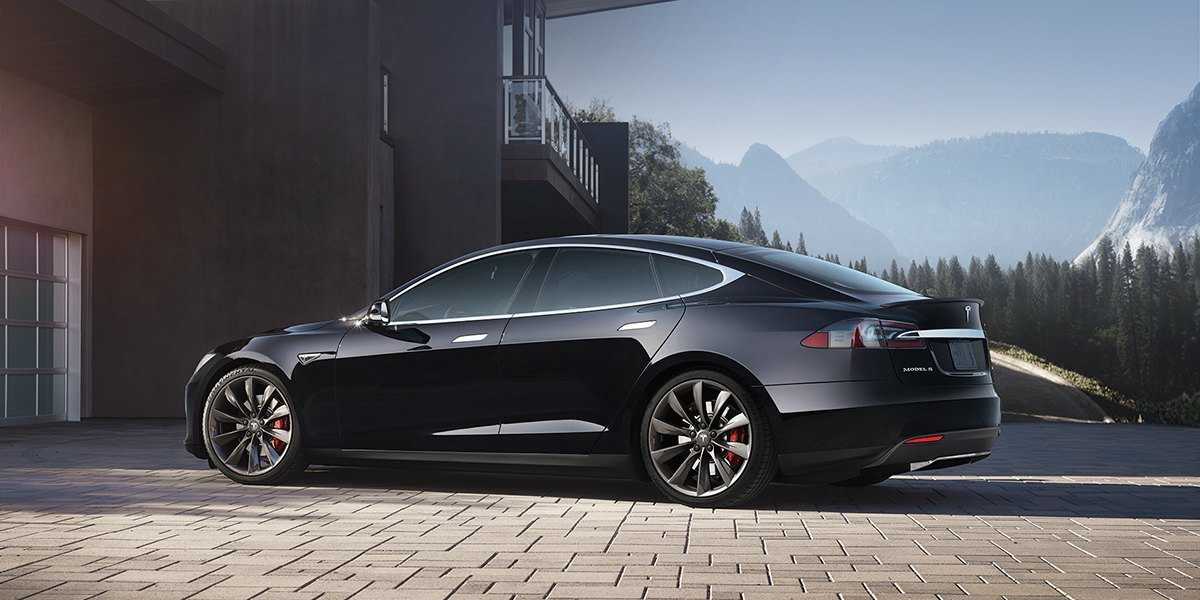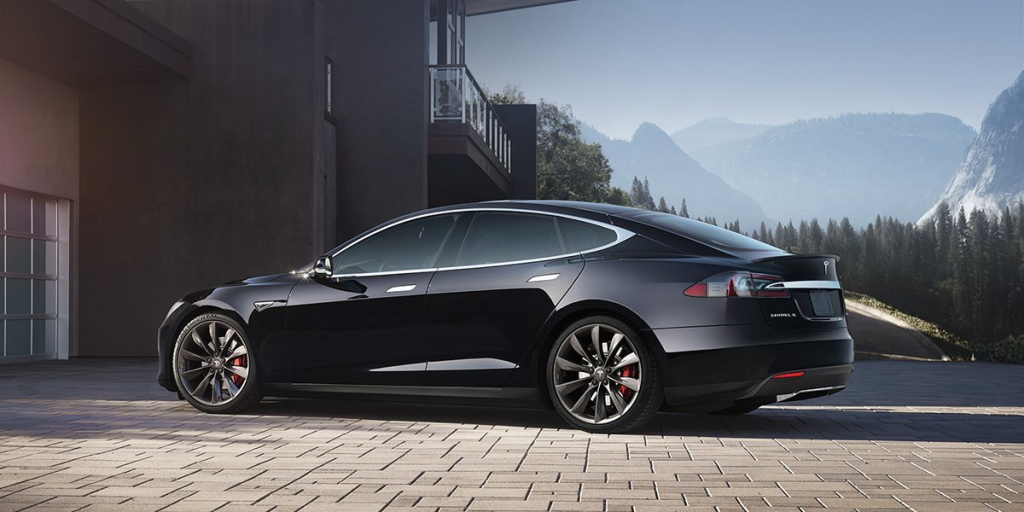News
Model 3 Mentioned in New Tesla Referral Program
Tesla has begun a second referral program like the one that ended October 31. This one runs until December 31 and includes tickets to the Model 3 event.

Tesla Motors has renewed its Model S referral program with new prizes and new rules.
The renewed Tesla referral program, good until the end of 2015, is very similar to the original one except this time around existing Tesla owners no longer qualify for the $1,000 credit if a purchase is made using their personal referral links. New owners would still qualify for the $1,000 discount off the price of a Model S.
Tesla recently came under heat in its home state of California when the Department of Motor Vehicles (DMV) began cracking down on the legality of its referral program. In a letter sent to Tesla, Frank Alvarez, chief of DMV’s Investigations Division, said that it’s “unlawful for any seller to induce or attempt to induce any person to enter into a contract subject to this chapter by offering a rebate, discount, commission, or other consideration, contingent upon the happening of a future event, on the condition that the buyer either sells, or gives information or assistance for the purpose leading to a sale by the seller of, the same or related goods.”
The latest updates to Tesla’s newest referral program is apparently in response to authorities in California and other states that claimed the program violated local laws.
Details for Tesla’s Nov 1 – Dec 31, 2015 Referral Program:
- Top Referrers by Region — The owner that makes the most qualifying referrals in each of North America, Europe and Asia/Pacific will receive a Ludicrous P90D Model S and an exclusive VIP invitation for two to the Model 3 unveiling event, including travel and accommodations.
- First to 10 by Region — The first to make 10 qualifying referrals in each of North America, Europe and Asia/Pacific will receive a Tesla Powerwall Home Battery, installation included.
- 10+ Qualifying Referrals — Each owner that makes 10 or more qualifying referrals will receive an invitation for two to attend the Model 3 unveiling event.
- 5+ Qualifying Referrals — Each owner that makes 5 or more qualifying referrals will receive an invitation for two to attend the Gigafactory opening event, including transportation to and from Reno, Nevada.
Rules
People making a referral must either have taken delivery of a Model S or have a confirmed order for one. Credit for referrals will be managed through each owner’s website account.
Tesla says it is offering the new referral program as a way of saying thank you to its many loyal customers. Since the company declines to use traditional advertising to market its cars, the positive word of mouth it gets from owners is vital to its success. But things are not always perfect in the real world and Tesla has apparently run into some sharp operators in the past. Here’s the language the people in legal insisted be added to the official announcement.
- Limits — You must be a current Tesla owner or have a confirmed order to make referrals, and cannot refer yourself. Only one referral credit can be applied to each Model S order; multiple credits on a single order are not permitted. Owners accepting giveaways will be responsible for any related taxes or government/third party fees.
- Good Faith — We introduce programs such as these in good faith and expect the same good faith in return. Please note that we may withhold credits, discounts or other awards where we believe customers are acting in bad faith or otherwise acting contrary to the intent of this program. To be clear, commercializing or otherwise selling referral codes is not appropriate, and we will not honor such codes. We cannot cover every nefarious scenario, nor will we attempt to, but we do promise to be fair and reasonable.
Good luck to everyone.
Tesla Referral Program News
- Taking a look back at the 1st Tesla Referral Program
- Elon Musk expands Tesla Referral Program
- Tesla confirms Bjørn Nyland as winner of referral program

Elon Musk
Elon Musk and Tesla AI Director share insights after empty driver seat Robotaxi rides
The executives’ unoccupied tests hint at the rapid progress of Tesla’s unsupervised Robotaxi efforts.

Tesla CEO Elon Musk and AI Director Ashok Elluswamy celebrated Christmas Eve by sharing personal experiences with Robotaxi vehicles that had no safety monitor or occupant in the driver’s seat. Musk described the system’s “perfect driving” around Austin, while Elluswamy posted video from the back seat, calling it “an amazing experience.”
The executives’ unoccupied tests hint at the rapid progress of Tesla’s unsupervised Robotaxi efforts.
Elon and Ashok’s firsthand Robotaxi insights
Prior to Musk and the Tesla AI Director’s posts, sightings of unmanned Teslas navigating public roads were widely shared on social media. One such vehicle was spotted in Austin, Texas, which Elon Musk acknowleged by stating that “Testing is underway with no occupants in the car.”
Based on his Christmas Eve post, Musk seemed to have tested an unmanned Tesla himself. “A Tesla with no safety monitor in the car and me sitting in the passenger seat took me all around Austin on Sunday with perfect driving,” Musk wrote in his post.
Elluswamy responded with a 2-minute video showing himself in the rear of an unmanned Tesla. The video featured the vehicle’s empty front seats, as well as its smooth handling through real-world traffic. He captioned his video with the words, “It’s an amazing experience!”
Towards Unsupervised operations
During an xAI Hackathon earlier this month, Elon Musk mentioned that Tesla owed be removing Safety Monitors from its Robotaxis in Austin in just three weeks. “Unsupervised is pretty much solved at this point. So there will be Tesla Robotaxis operating in Austin with no one in them. Not even anyone in the passenger seat in about three weeks,” he said. Musk echoed similar estimates at the 2025 Annual Shareholder Meeting and the Q3 2025 earnings call.
Considering the insights that were posted Musk and Elluswamy, it does appear that Tesla is working hard towards operating its Robotaxis with no safety monitors. This is quite impressive considering that the service was launched just earlier this year.
Elon Musk
Starlink passes 9 million active customers just weeks after hitting 8 million
The milestone highlights the accelerating growth of Starlink, which has now been adding over 20,000 new users per day.

SpaceX’s Starlink satellite internet service has continued its rapid global expansion, surpassing 9 million active customers just weeks after crossing the 8 million mark.
The milestone highlights the accelerating growth of Starlink, which has now been adding over 20,000 new users per day.
9 million customers
In a post on X, SpaceX stated that Starlink now serves over 9 million active users across 155 countries, territories, and markets. The company reached 8 million customers in early November, meaning it added roughly 1 million subscribers in under seven weeks, or about 21,275 new users on average per day.
“Starlink is connecting more than 9M active customers with high-speed internet across 155 countries, territories, and many other markets,” Starlink wrote in a post on its official X account. SpaceX President Gwynne Shotwell also celebrated the milestone on X. “A huge thank you to all of our customers and congrats to the Starlink team for such an incredible product,” she wrote.
That growth rate reflects both rising demand for broadband in underserved regions and Starlink’s expanding satellite constellation, which now includes more than 9,000 low-Earth-orbit satellites designed to deliver high-speed, low-latency internet worldwide.
Starlink’s momentum
Starlink’s momentum has been building up. SpaceX reported 4.6 million Starlink customers in December 2024, followed by 7 million by August 2025, and 8 million customers in November. Independent data also suggests Starlink usage is rising sharply, with Cloudflare reporting that global web traffic from Starlink users more than doubled in 2025, as noted in an Insider report.
Starlink’s momentum is increasingly tied to SpaceX’s broader financial outlook. Elon Musk has said the satellite network is “by far” the company’s largest revenue driver, and reports suggest SpaceX may be positioning itself for an initial public offering as soon as next year, with valuations estimated as high as $1.5 trillion. Musk has also suggested in the past that Starlink could have its own IPO in the future.
News
NVIDIA Director of Robotics: Tesla FSD v14 is the first AI to pass the “Physical Turing Test”
After testing FSD v14, Fan stated that his experience with FSD felt magical at first, but it soon started to feel like a routine.

NVIDIA Director of Robotics Jim Fan has praised Tesla’s Full Self-Driving (Supervised) v14 as the first AI to pass what he described as a “Physical Turing Test.”
After testing FSD v14, Fan stated that his experience with FSD felt magical at first, but it soon started to feel like a routine. And just like smartphones today, removing it now would “actively hurt.”
Jim Fan’s hands-on FSD v14 impressions
Fan, a leading researcher in embodied AI who is currently solving Physical AI at NVIDIA and spearheading the company’s Project GR00T initiative, noted that he actually was late to the Tesla game. He was, however, one of the first to try out FSD v14.
“I was very late to own a Tesla but among the earliest to try out FSD v14. It’s perhaps the first time I experience an AI that passes the Physical Turing Test: after a long day at work, you press a button, lay back, and couldn’t tell if a neural net or a human drove you home,” Fan wrote in a post on X.
Fan added: “Despite knowing exactly how robot learning works, I still find it magical watching the steering wheel turn by itself. First it feels surreal, next it becomes routine. Then, like the smartphone, taking it away actively hurts. This is how humanity gets rewired and glued to god-like technologies.”
The Physical Turing Test
The original Turing Test was conceived by Alan Turing in 1950, and it was aimed at determining if a machine could exhibit behavior that is equivalent to or indistinguishable from a human. By focusing on text-based conversations, the original Turing Test set a high bar for natural language processing and machine learning.
This test has been passed by today’s large language models. However, the capability to converse in a humanlike manner is a completely different challenge from performing real-world problem-solving or physical interactions. Thus, Fan introduced the Physical Turing Test, which challenges AI systems to demonstrate intelligence through physical actions.
Based on Fan’s comments, Tesla has demonstrated these intelligent physical actions with FSD v14. Elon Musk agreed with the NVIDIA executive, stating in a post on X that with FSD v14, “you can sense the sentience maturing.” Musk also praised Tesla AI, calling it the best “real-world AI” today.









